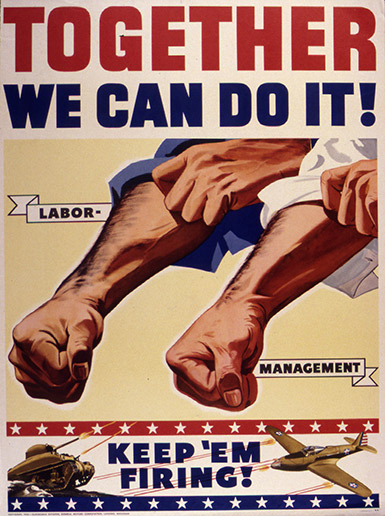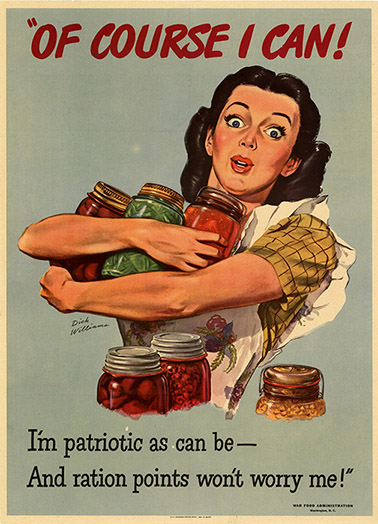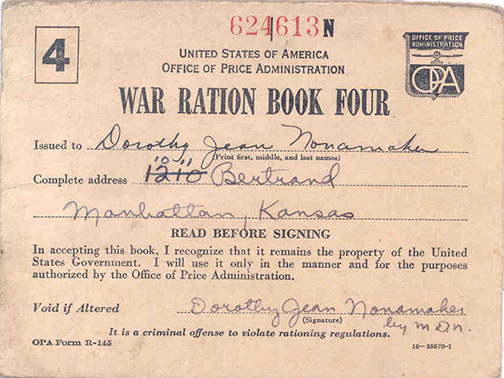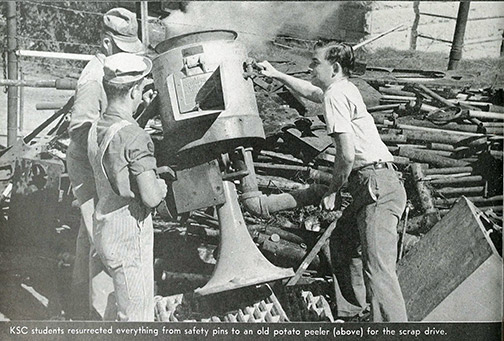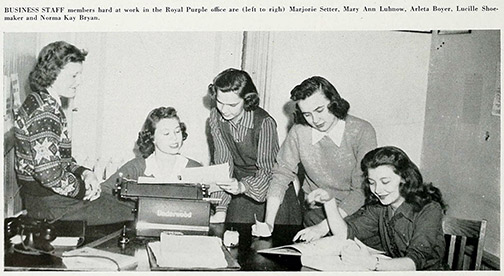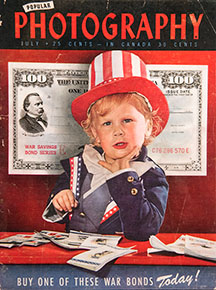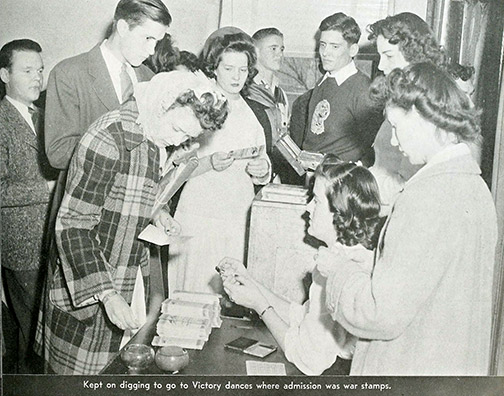Home Front - Riley County During the War
"There is one front and one battle where everyone in the United States—every man, woman, and child—is in action, and will be privileged to remain in action throughout this war. That front is right here at home, in our daily lives, and in our daily tasks."
President Franklin D. Roosevelt,
April 28th, 1942
When they hear about the "war effort" during World War II, most people picture tanks and planes and ships and the soldiers fighting on the front lines. It’s easy to forget, however, the millions of men and women on the home front whose service and sacrifices made victory possible.
The term “home front” refers to the actions of everyday citizens in support of the war effort. Millions of citizens were either too young or too old to join the military and fight in the war directly. Others were disqualified for medical reasons, excused because of family hardships, or were given waivers because their civilian professions were deemed too important to leave behind for military service. And, of course, many patriotic Americans were unjustly disqualified from the military because of their racial background or national origin. Yet, in whatever capacity they were able, many millions of civilians on the home front contributed directly or indirectly to supporting the troops overseas and those stationed here at home.
There were many ways of contributing to the war effort. Throughout the war, materials such as gasoline and rubber were in short supply on the home front. Processed and canned foods were not as readily available because they were sent to the troops overseas, and fresh foods could not be transported over great distances due to the shortage of gasoline. Other items, such as clothing, sugar, meat, and cooking oil were also hard to come by.
In order to ensure an equal distribution of such highly sought after commodities, citizens on the home front were issued ration books, limiting how much of certain goods they could buy and how often they could buy them. Ration books were filled with stamps for each rationed item. In order to purchase a rationed item, a person would have to provide one of their stamps to the retailer. Citizens were also encouraged to plant “victory gardens” to grow whatever food they could manage for themselves in an effort to reduce pressure on the public food supply.
Communities all across the country participated in scrap drives to collect materials to be repurposed for use in the war effort. All kinds of metals were collected to be recycled and made into armaments. Copper was in high demand, and so pennies were made from zinc-coated steel during the war. Paper was collected for re-use in packing equipment and weapons. Rubber was collected and recycled for use in soldiers' clothing and gear, in parts of vehicles, and in many other ways.
With so many men serving in the armed forces, women, who typically stayed at home or worked in traditionally female jobs, such as nursing and teaching, were asked to go to work. Women were employed in the defense industry, where they played an important role in manufacturing war-related equipment, vehicles, munitions, and more. Women worked as welders, electricians, and riveters - jobs traditionally occupied by men and which few had ever imagined a woman could do. One particular woman came to be a symbol for the strength and pride of working women everywhere: the famous “Rosie the Riveter.”
Women also served in the armed forces themselves. Women’s auxiliaries were created such as the Women’s Auxiliary Army Corps (later known as the Women’s Army Corps, WACs), Women Accepted for Voluntary Emergency Service (WAVES, Navy), Marine Corps Women’s Reserve, Women’s Air Force Service Pilots (WASPs), and the Coast Guard's reserve, the SPARs. Approximately 350,000 women served stateside and in every theater of the war.
To help finance the war effort, citizens were encouraged to purchase government war bonds. The bonds functioned essentially like a loan to the government for the war effort. War bonds were sold at 75% of their face value and matured over ten years. Bonds were available in denominations ranging from $25 up to $1,000 and were intended to be affordable to everyone. Stamps could also be purchased for 10 cents. The stamps were collected in a stamp booklet, and when the booklet was full, it was redeemed for a bond. The purchase of war bonds was heavily promoted across the nation, with posters, songs, advertising, and rallies inspiring citizens to purchase bonds or stamps.
Rationing, victory gardens, scrap drives, Rosie the Riveter, and war bonds were all important in boosting morale and served to inspire Americans to believe that everyone had a role and needed to do their part in helping to win the war.
